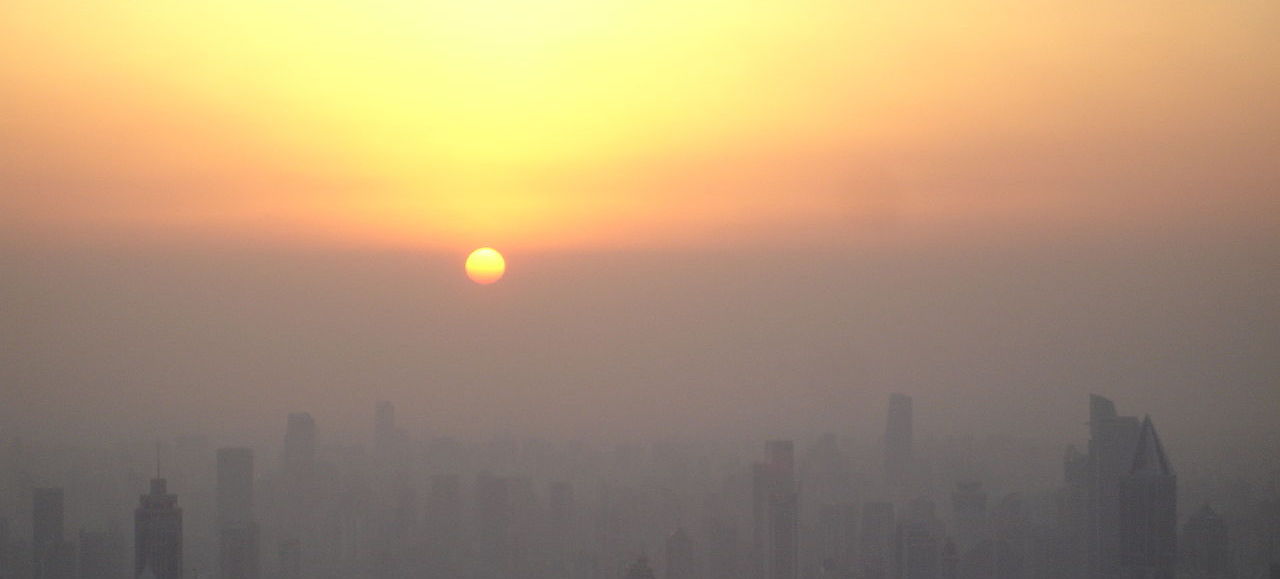History - Primary and Secondary Pollutants Basic

Image shows Shanghai at sunset. The sun has not actually dropped below the horizon yet, rather it has reached the smog line. From Wikimedia Commons.
Reading Guide
Air Pollutants
(From UC Riverside: Air Pollution in California)
- Primary air pollutants are pollutants that are formed and emitted directly from particular sources. Examples are particulates, carbon monoxide, nitrogen oxide, and sulfur oxide.
- Secondary air pollutants are pollutants that are formed in the lower atmosphere by chemical reactions. The two examples are ozone and secondary organic aerosol (haze).
Primary Pollutants
(From University of Calgary: Energy Education)
- Primary pollutants are any type of pollutant directly into the environment. They differ from secondary pollutants because secondary pollutants must form in the atmosphere, whereas primary pollutants do not. Primary pollutants can be emitted from many sources including cars, coal-fired power plants, natural gas power plants, biomass burning, natural forest fires, volcanoes, and many more.
- Types of primary pollutants include:
- Nitrogen oxides (NOx)
- Carbon monoxide (CO)
- Volatile organic compounds (VOCs)
- Sulfur oxides (SOx)
- Particulate matter (PM)
- Mercury (Hg)
Secondary Pollutants
(From University of Calgary: Energy Education)
- Secondary pollutants are pollutants which form in the atmosphere. These pollutants are not emitted directly from a source (like vehicles or power plants). Instead, they form as a result of the pollutants emitted from these sources reacting with molecules in the atmosphere to form a new pollutant.
- Secondary pollutants are concerning as they can be formed from many different compounds. The phenomena of photochemical smog (seen in high density cities) is a result of the interactions of primary pollutants with other molecules in the air such as molecular oxygen, water, and hydrocarbons. These combine to form yellow clouds that are harmful to humans. Photochemical smog is made up of various secondary pollutants like ozone, peroxyacyl nitrates (PANs), and nitric acid.
- Different types of secondary pollutants include:
- Ozone (O3)
- Sulfuric acid and nitric acid (component of acid rain)
- Particulate matter (PM)
- Nitrogen dioxide (NO2)
- Peroxyacyl nitrates (PANs)
- These substances essentially "cook up" in the atmosphere, and are typically found downwind of primary emissions due to the time it takes to produce them. When primary pollutants cannot be dispersed due to inversion layers in the atmosphere, smog is formed over the area where they were produced. This is why smog is so prominent in cities with warm, dense atmospheres. Secondary pollutants are very sensitive to weather patterns.
Guide prepared by P. Zannetti (12/2021). For corrections or expansions please contact us.